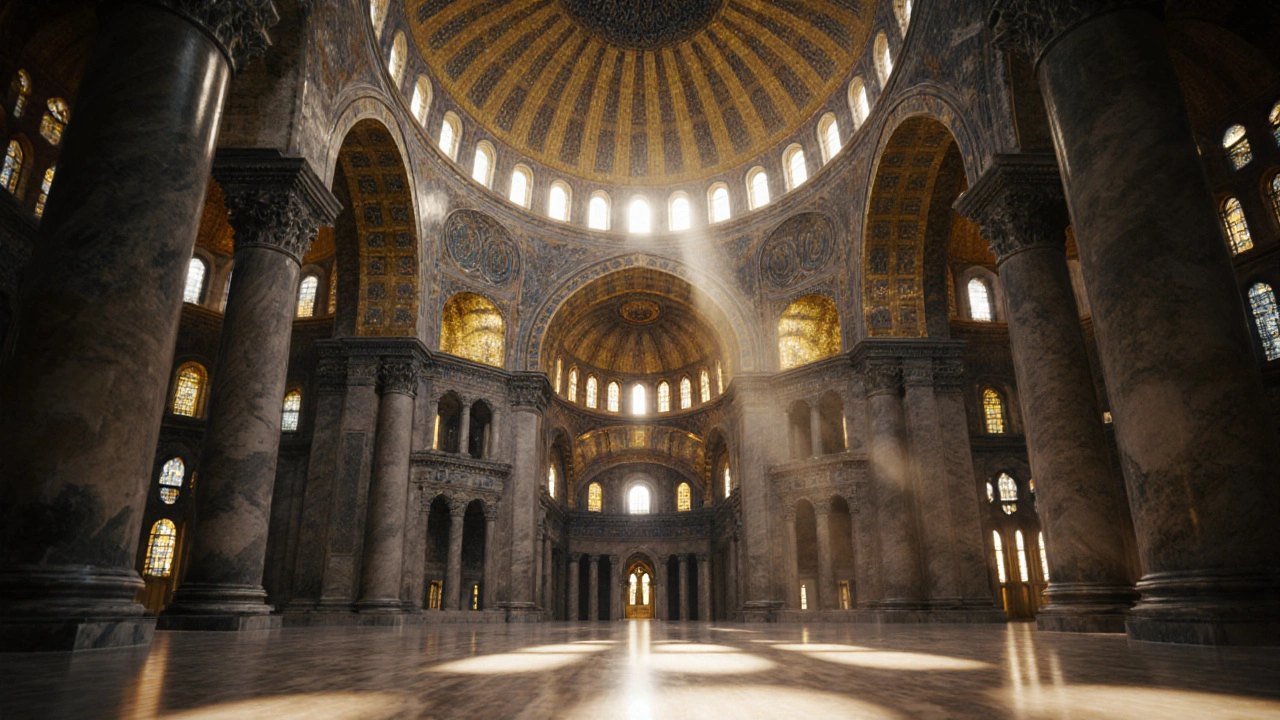Byzantine architecture used light, domes, and gold mosaics not just for beauty, but to create sacred spaces where heaven felt close. Its spiritual design still moves people today.
Hagia Sophia: The Architectural Wonder That Shaped Empires and Churches
When you think of Hagia Sophia, a monumental structure in Istanbul that began as a Christian cathedral, became a mosque, and now serves as a museum. Also known as Ayasofya, it stands as one of the most influential buildings in architectural history. Its massive dome, hovering over a sea of columns and light, didn’t just impress—it changed how buildings were made for over a thousand years.
Hagia Sophia is a masterclass in Byzantine architecture, a style defined by grand domes, intricate mosaics, and the clever use of light to create spiritual awe. Built in 537 AD under Emperor Justinian I, it combined Roman engineering with Eastern ornamentation. The dome, 31 meters wide and 55 meters high, seemed to float because of hidden windows and pendentives—curved triangular supports that let weight flow down to four massive piers. This technique became the blueprint for Orthodox churches from Russia to Serbia. Later, when the Ottomans took over in 1453, they added minarets and turned it into a mosque, an Islamic place of worship with calligraphy, prayer halls, and towering minarets. They didn’t tear it down—they adapted it. That’s rare. Most empires erase what came before. The Ottomans respected the structure, adding Islamic features without destroying its core. This fusion made Hagia Sophia a bridge between two worlds.
What makes Hagia Sophia more than a relic is how it still speaks to builders today. Its dome inspired St. Peter’s Basilica in Rome. Its use of natural light influenced modern churches and even museums. The way its interior feels both vast and intimate? That’s not luck—it’s design. You’ll find echoes of its geometry in everything from government buildings to airports. The mosaics, hidden under plaster for centuries and later restored, show how art and belief can survive political change. This isn’t just about stone and mortar. It’s about how people use space to say who they are, what they believe, and what they want to leave behind.
Below, you’ll find articles that dig into the styles that shaped Hagia Sophia—and the ones it shaped in return. From the symmetry of Renaissance churches to the bold forms of Ottoman mosques, these posts show how one building became a silent teacher for generations of architects.

